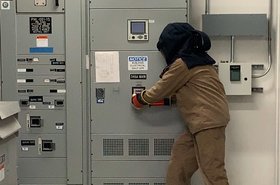On Tuesday, India’s Supreme Court allowed the regional government of Kashmir and Jammu to launch a trial restoration of 4G services in two districts almost a year after they were cut off.
The heavily militarized and long-contested territory between India and Pakistan suffered a new period of unrest - after two wars and a shorter but bitter conflict between India and Pakistani-backed forces - when the government of India decided to revoke a constitutional clause which had granted it a quasi-autonomous status.
It’s complicated
Days before the announcement in September last year, the Indian government cut off all telephone and Internet communications in the Indian-controlled region in the hope of tempering civil unrest, and minimizing global scrutiny.
The populations of the Indian-controlled parts of Kashmir and Jammu remain divided - some want independence, while others would rather the territory fall under Pakistani rule, as they are the only Indian region with a majority Muslim population.
Liberties that much of the world takes for granted vanished overnight - not just access to information, news reporting, and social media - but other services crucial to people’s livelihoods, like online tax returns and the means for many of the region’s professionals to work. “Even in the modern world today, it is possible to isolate a large population of eight million people and not let them talk,” Mishi Choudhary, ‘SFLC.in’ founder and human rights lawyer told DCD last year.
“People at some places didn’t get immediate medical help, resulting in deaths and aggravation of terminal illnesses,” Aakash Hassan, Kashmir correspondent at CNN-News18, told DCD.
“There have been multiple cases of journalists being detained and even injured while covering stories. One photojournalist was injured with pellets - this is the physical aspect,” he said.
“[But the] intangibility of this clampdown has affected reporters the most, because they are the ones who have to write about it and get news out… We have been provided a facilitation center by the administration where we can use the Internet for around half-an-hour in 24 hours. Each day, we bring our stories and have to wait in line to file. There has never been a time when journalists were so disempowered.”
2G services were switched back on in March of this year, with the 4G trial seen as a tentative step towards full restoration.
According to sources obtained by local daily newspaper The Economic Times, the region’s administration has decided to resume 4G Internet services before the weekend commencing 15th August for a trial period of two months, deliberately choosing two non-border districts of the region, where low-levels of violence have been recorded since article 370 of the constitution was revoked.
Much like communication blockades in the wars of the early 20th century, cutting off people’s Internet access is seen as a way of quashing revolts and dissidence - such as when governments blocked access social media apps in Egypt during the 2011 uprisings, and how China’s Great Firewall limits access to Western sites including Google, Twitter, and Facebook.
Just this week, the people of Belarus suffered rolling Internet blackouts as the government tried to shut down all access to social media sites, as protests and an ensuing brutal crackdown by the authorities have engulfed the country. But, as we found last year, such shutdowns don't always work.



